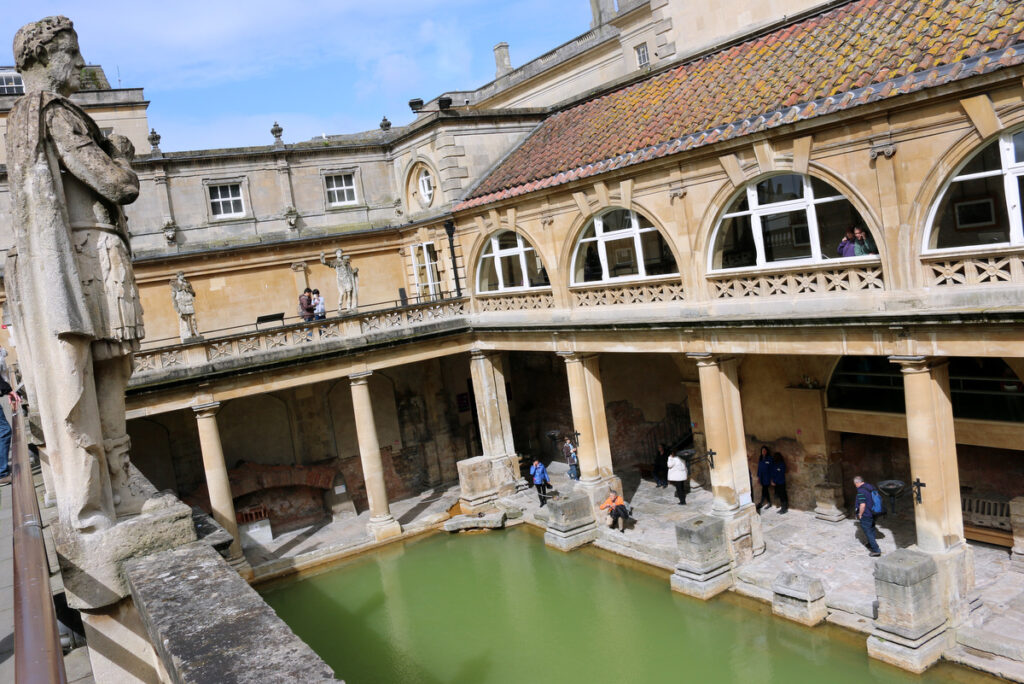BATH, England — The one-of-a-kind Roman baths sit in the middle of the city of Bath, and as they did 2,000 years ago, they remain a centerpiece of the town and are a must-see for anyone on holiday in England.
Natural hot springs here were used long before the Romans under Emperor Claudius invaded Britain, starting in 43 AD. Archaeological evidence suggests human activity around the springs dating to 8,000 BC; however, the area was probably too hot and swampy for a permanent settlement.
In Historia Regum Britanniae, now considered a mostly fictional account of British History, Geoffrey of Monmouth said British King Bladud built the first baths on the site in 863 BC. Bladud did so after the springs cured him and his herd of pigs of leprosy, according to legend.
Other evidence indicates the Celts built the first shrine in the city and dedicated it to the goddess Sulis. After the Romans moved into the region, they established the town of Aquae Sulis and constructed a temple and a bathing complex on the site between 60-70 AD.
The complex included cold and warm rooms, a central swimming pool and curative rooms. The Romans lined the central pool with lead sheets, which remain intact and are a testament to the engineering skills of the Romans.
The Romans built the temple to honor of Sulis Minerva, a combination of Sulis and the Roman goddess Minerva, the goddess of wisdom.
Over the next few centuries, the city transformed into an international destination for pilgrims and attracted visitors from as far away as Germany. The baths remained until the Roman withdrawal from the region in 410 AD.
What visitors see today sits beneath Bath’s current street level. The centerpiece is the Great Bath, a roughly 5-foot-deep pool lined with 45 sheets of lead and filled with eye-catching green-hued spring water, and an original lead pipe that feeds water to the pool can still be seen buried in the floor.
During the second century, the pool complex was enclosed within a wooden barrel-vaulted building. The building was eventually replaced by a stone structure.
The museum that interprets the history of the baths includes artifacts uncovered on the site during the last three centuries, including the gilded bronze head of Sulis Minerva, the goddess honored at the site, discovered in 1727 and stones that once made up the temple’s frieze.
Perhaps most intriguing are the dozens of “curses” that have been uncovered from the baths.
The curses are requests from bathers asking the gods for help dealing with a thief or another issue. Bathers who wanted to punish someone who stole from them would write messages on sheets of lead or pewter, then throw them into the spring for Sulis Minerva to render punishment.
More than just interesting artifacts, the curses recovered have helped researchers piece together what life was like during Roman times.
Bath is located about 90 minutes west of London by train.
